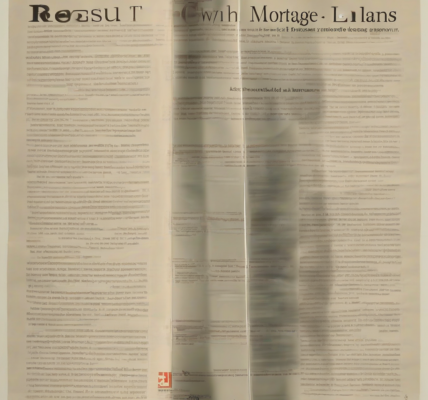Mortgage Pre-Approval: Your Key to a Smooth Homebuying Journey
Buying a home is a significant financial undertaking, often the largest investment most people will ever make. Navigating the complexities of the process can be daunting, but one crucial step that can significantly streamline the journey is obtaining a mortgage pre-approval.
What is Mortgage Pre-Approval?
A mortgage pre-approval is a preliminary assessment by a lender of your ability to secure a mortgage loan. Unlike a pre-qualification, which is a less formal process based on self-reported financial information, a pre-approval involves a more thorough review of your credit report, income documentation, and debt obligations. This rigorous examination gives you a much clearer picture of how much you can realistically borrow.
- Key Differences from Pre-qualification: While pre-qualification offers a general idea of your borrowing power, pre-approval provides a firm commitment from a lender, contingent on the appraisal and final loan application.
- Strengthens Your Offer: A pre-approval letter demonstrates to sellers that you’re a serious buyer with the financial capacity to purchase their home. This significantly enhances your competitiveness in a hot real estate market.
- Avoids Wasted Time and Effort: By knowing your borrowing limit upfront, you can focus your home search on properties within your budget, avoiding the disappointment of falling in love with a home you can’t afford.
The Pre-Approval Process: A Step-by-Step Guide
The pre-approval process typically involves these key steps:
- Choose a Lender: Research different lenders – banks, credit unions, and mortgage brokers – comparing interest rates, fees, and loan programs.
- Complete the Application: You’ll need to provide extensive financial information, including income statements (W-2s, pay stubs, tax returns), bank statements, and credit reports. Be prepared for a thorough review.
- Credit Report Review: The lender will pull your credit report to assess your credit score and history. A higher credit score generally leads to better interest rates.
- Debt-to-Income Ratio (DTI) Calculation: Your DTI is a crucial factor in determining your eligibility. It represents the percentage of your gross monthly income that goes toward debt payments. A lower DTI is more favorable.
- Income Verification: The lender will verify your employment and income to ensure the information provided is accurate and consistent with your financial history.
- Asset Verification: You may need to provide documentation for assets like savings accounts and investment accounts to demonstrate your financial stability.
- Loan Program Selection: Based on your financial profile and the lender’s offerings, you’ll choose the most appropriate mortgage program (e.g., fixed-rate, adjustable-rate, FHA, VA).
- Pre-Approval Letter: Upon successful completion of the review, you’ll receive a pre-approval letter outlining the loan amount you’re approved for, the interest rate, and other key terms.
Benefits of Mortgage Pre-Approval
- Competitive Advantage: In competitive markets, a pre-approval letter significantly strengthens your offer, making you a more attractive buyer to sellers.
- Realistic Budget Setting: It helps you determine a realistic budget, preventing you from falling in love with homes beyond your financial reach.
- Streamlined Closing Process: The pre-approval speeds up the closing process by reducing the time spent on financial verification.
- Improved Negotiation Power: Knowing your borrowing power allows you to negotiate more confidently with sellers.
- Peace of Mind: It provides peace of mind, knowing you’re financially prepared to make a purchase.
- Shop Around for Better Rates: Pre-approval allows you to compare rates from multiple lenders and choose the best option.
Factors Affecting Mortgage Pre-Approval
Several factors influence your chances of getting pre-approved for a mortgage:
- Credit Score: A higher credit score generally results in better interest rates and increased loan approval odds.
- Debt-to-Income Ratio (DTI): Lenders prefer lower DTI ratios, indicating a greater ability to manage debt.
- Income Stability: Consistent income history demonstrates financial stability and reliability.
- Down Payment: A larger down payment often leads to better loan terms and a lower interest rate.
- Type of Loan: Different loan programs (conventional, FHA, VA) have varying eligibility requirements.
- Employment History: A stable employment history strengthens your application.
- Assets: Sufficient liquid assets (savings, investments) demonstrate financial capacity.
Understanding the Pre-Approval Letter
Your pre-approval letter is a crucial document. It should clearly outline the following:
- Loan Amount: The maximum amount you’re approved to borrow.
- Interest Rate: The interest rate you’ll likely receive (this may be subject to change).
- Loan Term: The length of the loan (e.g., 15 years, 30 years).
- Validity Period: The timeframe during which the pre-approval remains valid.
- Conditions: Any conditions that must be met to finalize the loan.
Things to Consider Before Applying for Pre-Approval
- Improve Your Credit Score: If your credit score is low, work on improving it before applying.
- Reduce Debt: Lowering your debt-to-income ratio increases your chances of approval.
- Gather Necessary Documents: Prepare all required financial documents beforehand to expedite the process.
- Shop Around for Lenders: Compare offers from multiple lenders to secure the best terms.
- Understand Loan Programs: Research different loan programs to find the one that suits your needs.
What Happens After Pre-Approval?
Once you’ve received your pre-approval letter, you can begin your home search with confidence. Remember, the pre-approval is not a final loan approval. You’ll need to complete a full loan application after finding a suitable property.
- Property Appraisal: The lender will order an appraisal to determine the market value of the home.
- Final Loan Application: You’ll need to complete a formal loan application, providing all necessary documentation.
- Underwriting Process: The lender’s underwriters will thoroughly review your application to verify all information and assess the risk.
- Closing: Once everything is approved, you’ll proceed to the closing process, signing the final loan documents and receiving the keys to your new home.
Conclusion (Placeholder – This section is excluded as per instructions)




